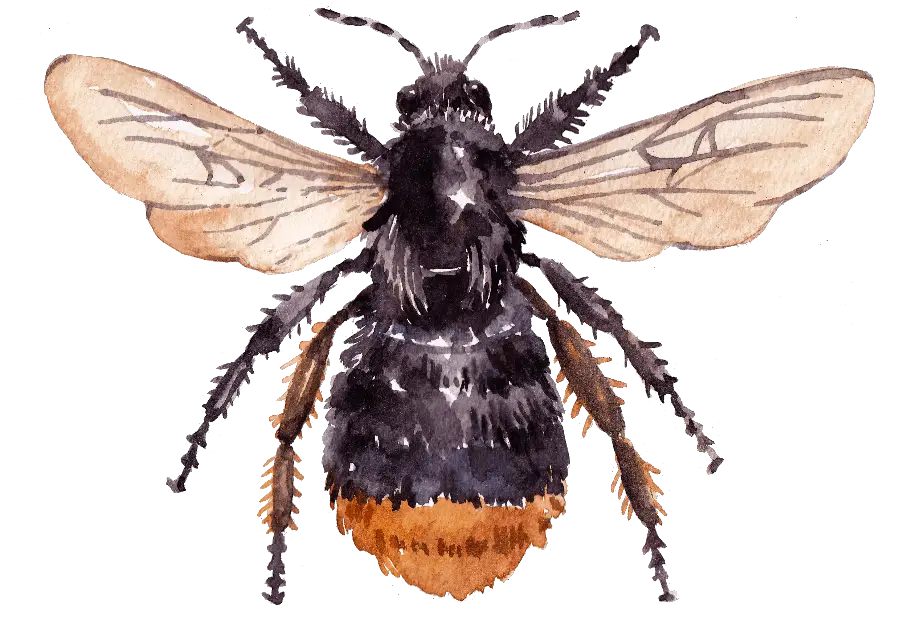Last updated on January 4th, 2024 at 02:11 pm
In the vast world of bees, where each species has its own tale to tell, the Bombus ruderarius, or the Red-Shanked Carder Bee, stands out with its distinctive appearance and intriguing habits. This bee is not just another buzzing insect; it’s a testament to the wonders of nature. Let’s embark on a journey to discover the secrets of the Red-Shanked Carder Bee.
Appearance: A Red-Hued Marvel
The Red-Shanked Carder Bee is truly a sight to behold:
- Vibrant Red Legs: Its most distinguishing feature is its striking red legs, which give it its name.
- Fuzzy Body: This bee boasts a predominantly black body with a mix of ginger and grey hairs, giving it a somewhat fuzzy and endearing appearance.
- Size: Typically, they measure around 10-15mm, placing them among the medium-sized bumblebees.
Habitat: Nature’s Cozy Corners
If you’re keen on spotting these red-legged wonders, here’s where you should set your sights:
- Geographical Spread: Predominantly found across Europe, with a particular concentration in the UK.
- Preferred Habitats: They have a penchant for grasslands, meadows, and heathlands. Urban gardens with a variety of flowers can also attract them.
Behaviour: The Gentle Foragers
The Red-Shanked Carder Bee exhibits some unique behaviours:
- Nesting Habits: Unlike many other bees, they prefer to nest on the ground, often in long grass, creating a cosy haven for their young.
- Foraging Pattern: They’re known to forage close to their nesting sites, rarely venturing far, which makes them a delight for garden enthusiasts who spot them regularly.
Diet: Nature’s Sweet Nectar
What’s on the menu for the Red-Shanked Carder Bee?
- Floral Feast: They primarily feed on nectar and pollen. Plants like red clover, vetches, and deadnettles are among their favourites. Their diverse diet makes them vital pollinators for a range of plants.
When and Where to Spot Them
For those eager to catch a glimpse:
- Time of Year: The warmer months, particularly between May and September, are ideal.
- Time of Day: Like many bees, they’re most active during daylight hours, especially in the morning and late afternoon.
- Location: Grasslands and meadows are your best bet, but don’t be surprised to find them buzzing in flower-rich urban gardens.
| Best Time to Spot | Location | Activity Level |
|---|---|---|
| Morning | Meadows | High |
| Midday | Urban Gardens | Moderate |
| Late Afternoon | Heathlands | High |
Why They Matter
The Red-Shanked Carder Bee, like all bees, plays a pivotal role in our ecosystem:
- Pollination Powerhouse: Their foraging habits ensure the pollination of a variety of plants, aiding in biodiversity.
- Indicator Species: Their presence (or absence) can indicate the health of a habitat. A decline in their numbers might signal environmental issues that need addressing.
Conclusion
The Red-Shanked Carder Bee is more than just a pretty insect with red legs. It’s a vital cog in the wheel of nature, ensuring the survival and thriving of various plants.
Use our handy bee ID guide to find out how to identify different types of bees.





